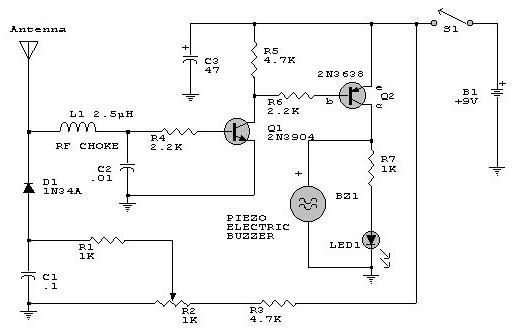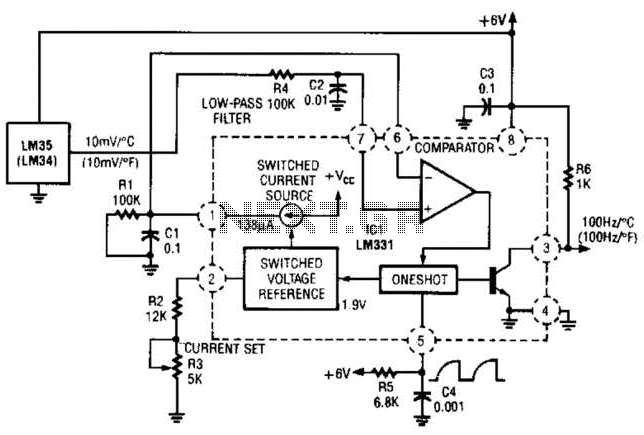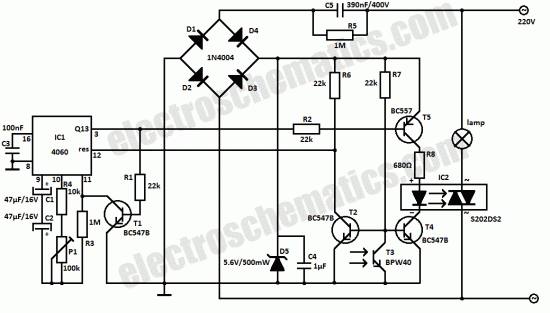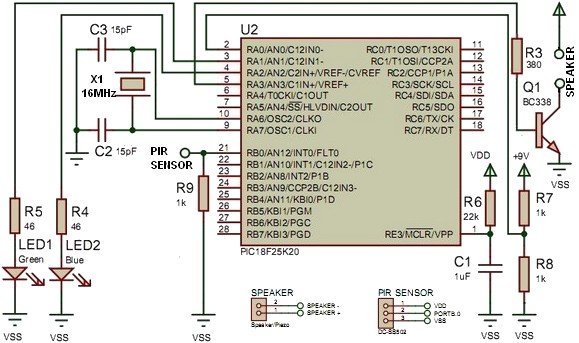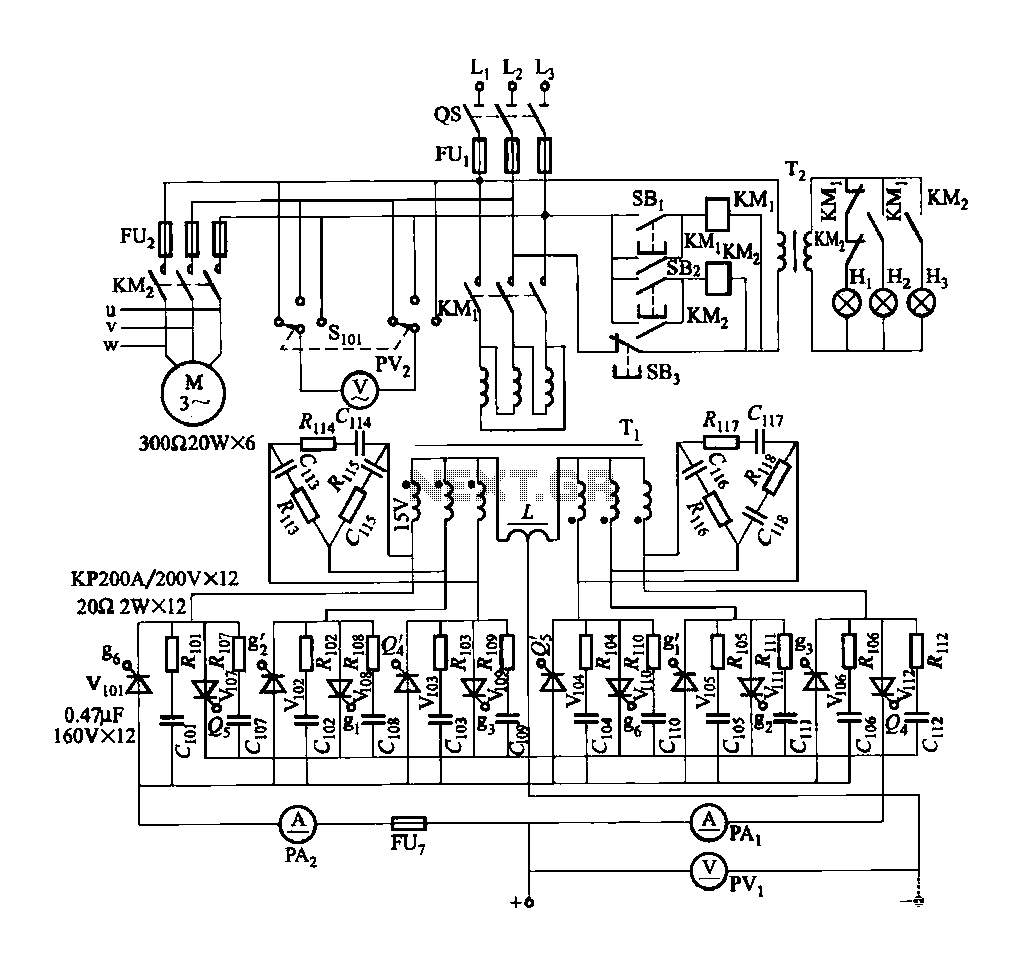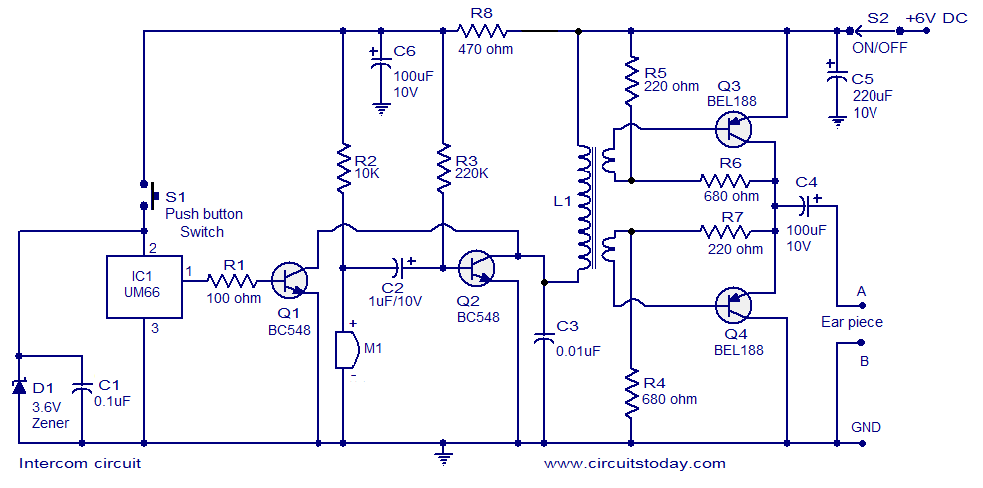
Transistor Sensor Temperature Measurer

Using the fact that the VRE of a transistor shifts 59.16 mV per decade of current at 25°C. This constant is 0.33%/°C. This V5E-vs.-current relationship holds true regardless of the FBe absolute value. IC, an LT1043, acts as an oscillator and switches a current source (Q1) at a 10:1 ratio. The stepped 10:1 current drive is translated to temperature by IC2, Q2, and the associated components. Accuracy is ±1%. No compensation is needed if Q2 is changed.
The circuit described operates on the principle that the voltage reference (VRE) of a bipolar junction transistor (BJT) exhibits a predictable shift of 59.16 mV for each decade increase in current at a nominal temperature of 25°C. This characteristic allows for precise temperature measurements, as the VRE variation is consistent at a rate of 0.33% per degree Celsius.
The primary component of this circuit is the LT1043 integrated circuit (IC), which functions as an oscillator. It generates a square wave output that modulates a current source (Q1) at a ratio of 10:1. This modulation is crucial as it allows for a stepped current output that can be easily interpreted by subsequent circuitry.
The output current from Q1 is then processed by additional components, including a second integrated circuit (IC2) and a transistor (Q2). These components work together to translate the modulated current into a temperature reading. The design ensures that the system maintains an accuracy of ±1%, which is critical for reliable temperature measurements in various applications.
Notably, the circuit design allows for the replacement of Q2 without the need for further compensation adjustments. This feature enhances the versatility and ease of maintenance of the system, making it suitable for a range of temperature sensing applications. The relationship between the stepped current output and temperature can be utilized in various electronic devices requiring temperature monitoring and control. Using the fact that the VRE of a transistor shifts 59.16 mV per decade of current at 25°C. This cons tant is 0.33%/°C. This V5E-vs.-current relationship holds true regardless of the FBe absolute value. IC, an LT1043, acts as an oscillator and switches a current source (Ql) at a 10:1 ratio. The stepped 10:1 current drive is translated to temperature by IC2, Q2, and the associated components. Accuracy is ±1%. No compensation is needed if Q2 is changed.
The circuit described operates on the principle that the voltage reference (VRE) of a bipolar junction transistor (BJT) exhibits a predictable shift of 59.16 mV for each decade increase in current at a nominal temperature of 25°C. This characteristic allows for precise temperature measurements, as the VRE variation is consistent at a rate of 0.33% per degree Celsius.
The primary component of this circuit is the LT1043 integrated circuit (IC), which functions as an oscillator. It generates a square wave output that modulates a current source (Q1) at a ratio of 10:1. This modulation is crucial as it allows for a stepped current output that can be easily interpreted by subsequent circuitry.
The output current from Q1 is then processed by additional components, including a second integrated circuit (IC2) and a transistor (Q2). These components work together to translate the modulated current into a temperature reading. The design ensures that the system maintains an accuracy of ±1%, which is critical for reliable temperature measurements in various applications.
Notably, the circuit design allows for the replacement of Q2 without the need for further compensation adjustments. This feature enhances the versatility and ease of maintenance of the system, making it suitable for a range of temperature sensing applications. The relationship between the stepped current output and temperature can be utilized in various electronic devices requiring temperature monitoring and control. Using the fact that the VRE of a transistor shifts 59.16 mV per decade of current at 25°C. This cons tant is 0.33%/°C. This V5E-vs.-current relationship holds true regardless of the FBe absolute value. IC, an LT1043, acts as an oscillator and switches a current source (Ql) at a 10:1 ratio. The stepped 10:1 current drive is translated to temperature by IC2, Q2, and the associated components. Accuracy is ±1%. No compensation is needed if Q2 is changed.
